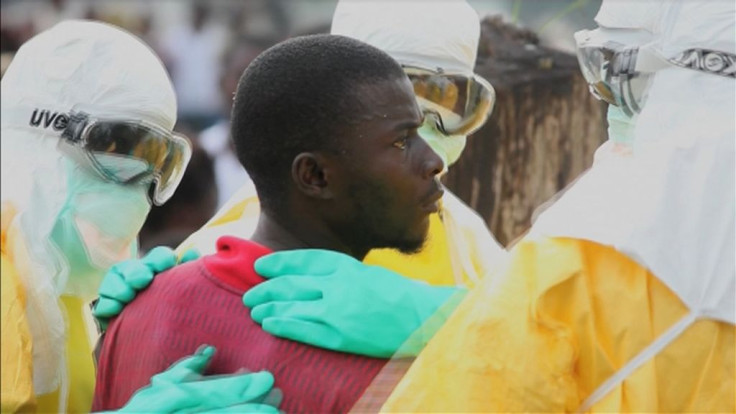Ebola Outbreak 2014: How Bad Could It Get?

It is a scene straight out of Hollywood: A deadly virus spreads uncontrollably across Africa; quarantines fail; economies hang in the balance; thousands of people are infected – more than half of whom will die – and there is very little anyone can do to stop it. The thing is, this frightening scenario is real.
The Ebola outbreak currently gripping West Africa has killed over 1,550 people out of 3,069 known cases in five countries – Guinea, Liberia, Nigeria, Senegal and Sierra Leone – and could affect some 17,000 more before the epidemic is over, according to the World Health Organization. Riots have broken out in quarantined areas, isolation centers are overwhelmed, experimental vaccines are still far from ready and health workers who have not fled the region are either getting infected or are already sick.
“It is the world’s first Ebola epidemic, and it’s spiraling out of control,” Tom Frieden, director of the Centers for Disease Control and Prevention, said Tuesday. A CDC spokesperson did not immediately respond to a request for comment on Wednesday.
The fatality rate of the disease is, on average, just 50 percent, but some outbreaks of Ebola have had a fatality rate of up to 90 percent. Experts warn that the virus could spread beyond the handful of West African countries where it has already taken hold. A coordinated response to the historic Ebola outbreak – the largest and deadliest in human history – is underway, but health officials fear the ongoing effort to contain the virus is not enough.
“The crisis we are watching unfold derives less from the virus itself and more from … a disastrously inadequate response to the outbreak," World Bank president Jim Yong Kim wrote in a scathing Washington Post op-ed Sunday that criticized foreign response to the epidemic. "Many are dying needlessly. Historically, in the absence of effective care, common acute infections have been characterized by high mortality rates. What’s happening with Ebola in Africa has been no different.”
Deadly disease outbreaks have punctuated human history, from the devastating Black Death plague that killed an estimated 75 to 200 million people across 14th-century Europe, to the Spanish flu pandemic of 1918 that killed some 50 million people worldwide – a whopping 3 percent of the world’s population.
The difference between the response to the Spanish flu pandemic and last year’s outbreak of bird flu in China, which led to 132 infections and 44 deaths, is about a hundred years of medical and technological advances. Many health agencies now have systematic response plans in place for when an outbreak occurs. To combat last year’s bird flu outbreak, Chinese authorities incinerated tens of thousands of birds, vaccinated chickens and pigeons against the disease and swiftly quarantined anyone who displayed flu-like symptoms in areas where the virus was known to have taken root.
The first Ebola outbreak occurred in 1976 in Zaire, now the Democratic Republic of the Congo. There were 318 reported cases of the virus, 88 percent of which were fatal. It marked the first time Ebola was formally recognized by world health leaders. There have been some 32 incidences of the disease since then, including the current outbreak, according to the U.S. Centers for Disease Control and Prevention.
To prevent the Ebola virus from spreading further across Africa, health officials are working to separate and treat the sick, monitor those who were in contact with them and safely bury the dead, the Associated Press reported. Authorities have established quarantines in various cities across West Africa in an effort to contain the virus, but even those have made an already bad situation even worse: Containment measures have both hampered food production and rerouted supplies away from some communities, The Wire reports.
The World Health Organization’s top priority is to make sure health workers are given the proper protective gear and that they receive hazard pay, but that could cost upwards of $600 million, according to the Associated Press.
Although there are several experimental vaccines for Ebola in various stages of development, there is currently no known treatment for the disease. The U.S. Food and Drug Administration recently expedited its review of a new Ebola drug from the pharmaceutical company GlaxoSmithKline and the National Institute of Allergy and Infectious Diseases, but it will have to pass through several rounds of human trials before it is deemed safe.
More than 100 scientists and industry executives will meet this week at the World Health Organization’s headquarters in Geneva, Switzerland to sift through the world’s supply of experimental Ebola drugs and vaccines to see which ones are ready for clinical trials, according to Time. Many of the drugs have never been tested on humans and face being bogged down by clinical testing.
In light of these holdups involving new treatments, emergency response workers need to scale up isolation efforts, deploy mobile laboratories to better diagnose infections, expand the network of regional field hospitals and create dedicated “air bridges” to move personnel and supplies more efficiently, according to Medecins Sans Frontieres President Joanne Liu.
“We cannot cut off the affected countries and hope this epidemic will simply burn out,” she wrote in a statement from Tuesday. “To put out this fire, we must run into the burning building.”
© Copyright IBTimes 2025. All rights reserved.






















